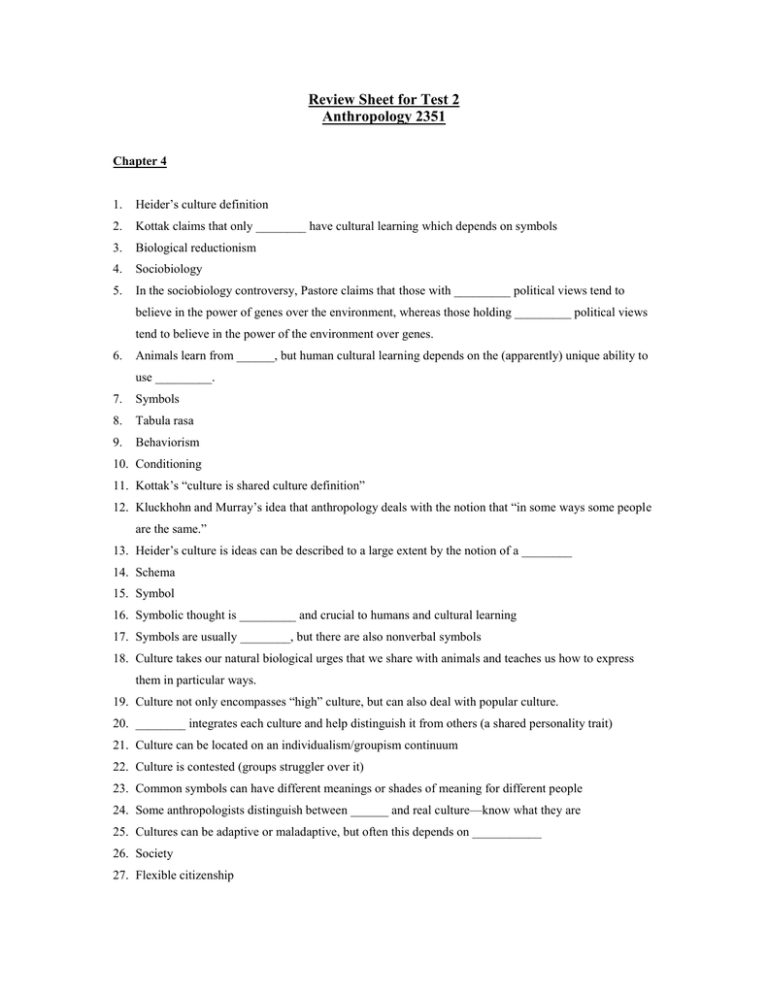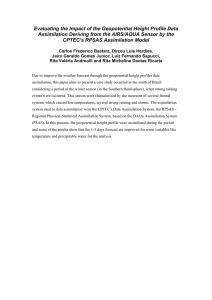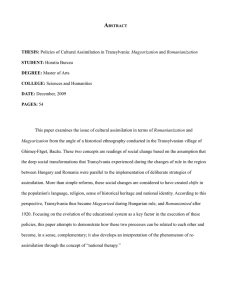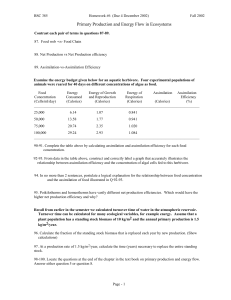HCCKotreview22006.doc
advertisement

Review Sheet for Test 2 Anthropology 2351 Chapter 4 1. Heider’s culture definition 2. Kottak claims that only ________ have cultural learning which depends on symbols 3. Biological reductionism 4. Sociobiology 5. In the sociobiology controversy, Pastore claims that those with _________ political views tend to believe in the power of genes over the environment, whereas those holding _________ political views tend to believe in the power of the environment over genes. 6. Animals learn from ______, but human cultural learning depends on the (apparently) unique ability to use _________. 7. Symbols 8. Tabula rasa 9. Behaviorism 10. Conditioning 11. Kottak’s “culture is shared culture definition” 12. Kluckhohn and Murray’s idea that anthropology deals with the notion that “in some ways some people are the same.” 13. Heider’s culture is ideas can be described to a large extent by the notion of a ________ 14. Schema 15. Symbol 16. Symbolic thought is _________ and crucial to humans and cultural learning 17. Symbols are usually ________, but there are also nonverbal symbols 18. Culture takes our natural biological urges that we share with animals and teaches us how to express them in particular ways. 19. Culture not only encompasses “high” culture, but can also deal with popular culture. 20. ________ integrates each culture and help distinguish it from others (a shared personality trait) 21. Culture can be located on an individualism/groupism continuum 22. Culture is contested (groups struggler over it) 23. Common symbols can have different meanings or shades of meaning for different people 24. Some anthropologists distinguish between ______ and real culture—know what they are 25. Cultures can be adaptive or maladaptive, but often this depends on ___________ 26. Society 27. Flexible citizenship 28. Culture (as compared with society)—hint: fuzzy category 29. National culture 30. Heider claims that there is a ______ American culture 31. International culture 32. Diffusion 33. Subcultures 34. Anthropologists are reluctant to use the term subculture because it connotes “below” or “inferior” 35. Ethnocentrism 36. Anthropology and cultural relativism the “enemies” of ethnocentrism 37. Cultural relativism 38. Human rights are usually seen as inalienable 39. Inalienable 40. Human rights are focused in 3 areas 41. Human rights challenges cultural relativism by invoking a _______ and a ______ beyond and superior to particular countries, religions and cultures 42. Cultural rights 43. 4 focus areas for cultural rights 44. Indigenous property rights 45. Universal 46. Generalities 47. Cultures borrow from each other to form generalities 48. Particularities 49. Diffusion 50. 3 kinds of diffusion 51. acculturation 52. “disacculturation” 53. assimilation 54. integration 55. “disassimilation” 56. Independent invention 57. Globalization 58. Neoliberalism 59. A negative reaction to globalization is __________ Chapter 5 1. 2 main approaches to race 2. Parrillo suggests that racial classification is merely a __________ construct not a biological absolute 3. Clines 4. Kottak’s main reason for racial classification falling out of favor with biology is due to is that scientists have trouble grouping people into distinct racial units 5. A race is supposed to reflect shared genetic material, but early scholars used phenotype (skin color) for classification 6. Problems with racial labels 1. 2. 3. 4. they do not accurately describe skin color the three initial groupings of Caucasoid, Negroid and Mongoloid did not cover all groups, therefore races had to be added phenotypical characteristics supposedly reflect genetic material that is shared and has stayed the same for a long time, but phenotypes do not have a genetic basis Other indicators such as height can arise due to environment and not genetics 7. Natural Selection 8. Melanin 9. Melanin offers a protection against a variety of maladies including sunburn and skin color 10. Kottak believes that natural selection or resistance levels to ultra violet radiation explains the geographic distribution of skin color 11. The races that we hear about everyday are _______ constructed and have little to do with biological differences 12. Descent 13. Hypodescent 14. Cognition 15. Stratification 16. Jensonism (a theory of innate superiority) 17. Kornblum argues that The Bell Curve claims that inequality in the U.S. is increasingly because of biological differences 18. Opposition to The Bell curve (3 reasons) 19. Murray’s 3 important conclusions in the Bell Curve 20. One problem with I.Q. tests is that bilinguals score less well on them due to focusing on 2 different languages as opposed to students who just focus on English (testing in the U.S.) 21. Heider notes that intelligence is difficult enough to describe in a singular culture and that it is much more difficult to describe cross-culturally 22. Gardner’s theory of “multiple intelligences” (know all 7 and what they mean) Chapter 6 1. Ethnicity 2. Parrillo’s definition of ethnicity 3. Ethnic group 4. Feelings about one’s ethnicity can vary within a country and over time 5. The importance of ________ can change during a life cycle 6. Members of an ethnic group have shared and differing experiences 7. Status 8. Ascribed status 9. Achieved status 10. Meritocracy 11. Situational negotiation of social identity 12. Nation 13. State 14. Nation-state 15. Nationalities 16. “imagined communities” 17. diasporas 18. Colonialism 19. “divide and rule policy” 20. Negritude 21. Khapoya’s negative issues concerning colonialism (1. hindered economic development, 2. increased interethnic rivalries (indirect rule), 3. problems with traditional authority patterns, 4. Created artificial boundaries that cause later political problems,) 22. Indirect rule (and associated nation) 23. Direct rule (and associated nation) 24. Khapoya’s 5 positive aspects of colonization 25. Assimilation 26. Parrillo’s majority conformity (hint: A+B+C=A) also known as Stewart’s “transmuting pot” theory 27. Gordon’s 7 phases of assimilation and what they mean (1. Cultural Assimilation (acculturation), 2. Marital assimilation, 3. Structural assimilation, 4. Identificational assimilation, 5. Attitude-Receptional assimilation, 6. Behavior-Receptional assimilation, 7. Civic assimilation) 28. Amalgamation or “melting pot theory” (hint: A+B+C=D) 29. Plural society (hint: A+B+C=A+B+C) 30. Parrillo’s 2 types of pluralism 31. Multiculturalism 32. Prejudice 33. Stereotypes 34. Discrimination 35. 2 types of discrimination in terms of the law 36. 2 types of discrimination 37. ethnocide 38. forced assimilation 39. Colonialism is a force of oppression 40. Thompson and Hickey’s “neo-colonialism” 41. Cultural colonialism 42. 1st, 2nd, and 3rd “worlds” 43. Kornblum’s 4th “world” 44. Wallerstein’s World Systems Theory (Core States, Semiperipheral areas and Peripheral Areas and how they are defined) ANSWER KEY Chap.4 Humans Conservative, liberal Experience, symbol Schema Unique Linguistic Core values Ideal Subjectivities Singular Justice, morality Religious fundamentalism Chap. 5 Sociopolitical Culturally Chap. 6 Ethnic identity




